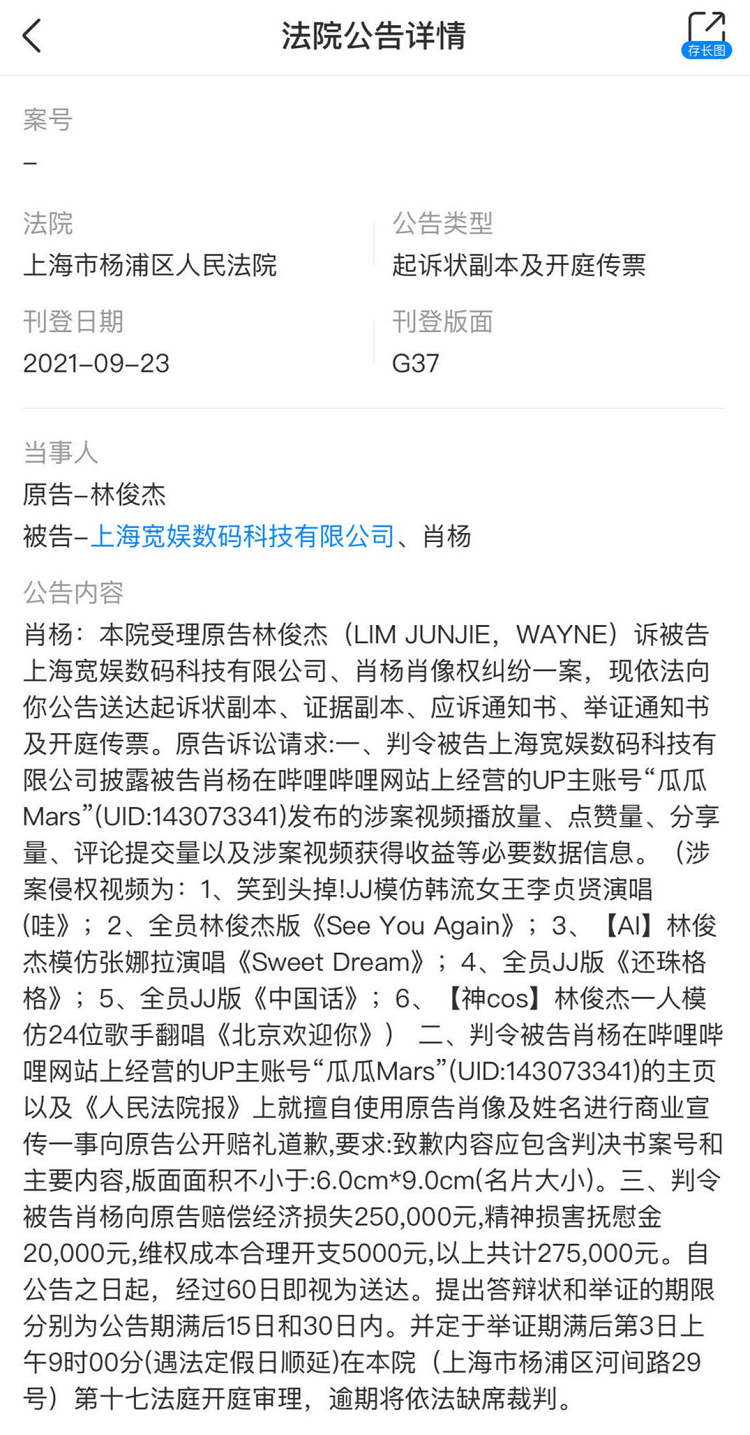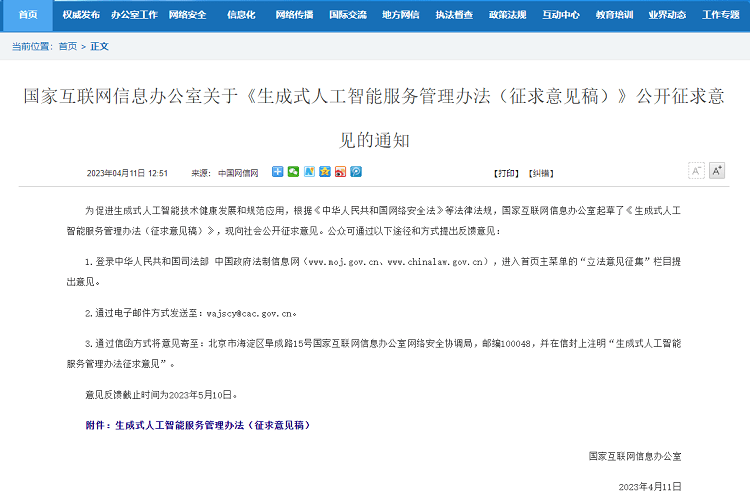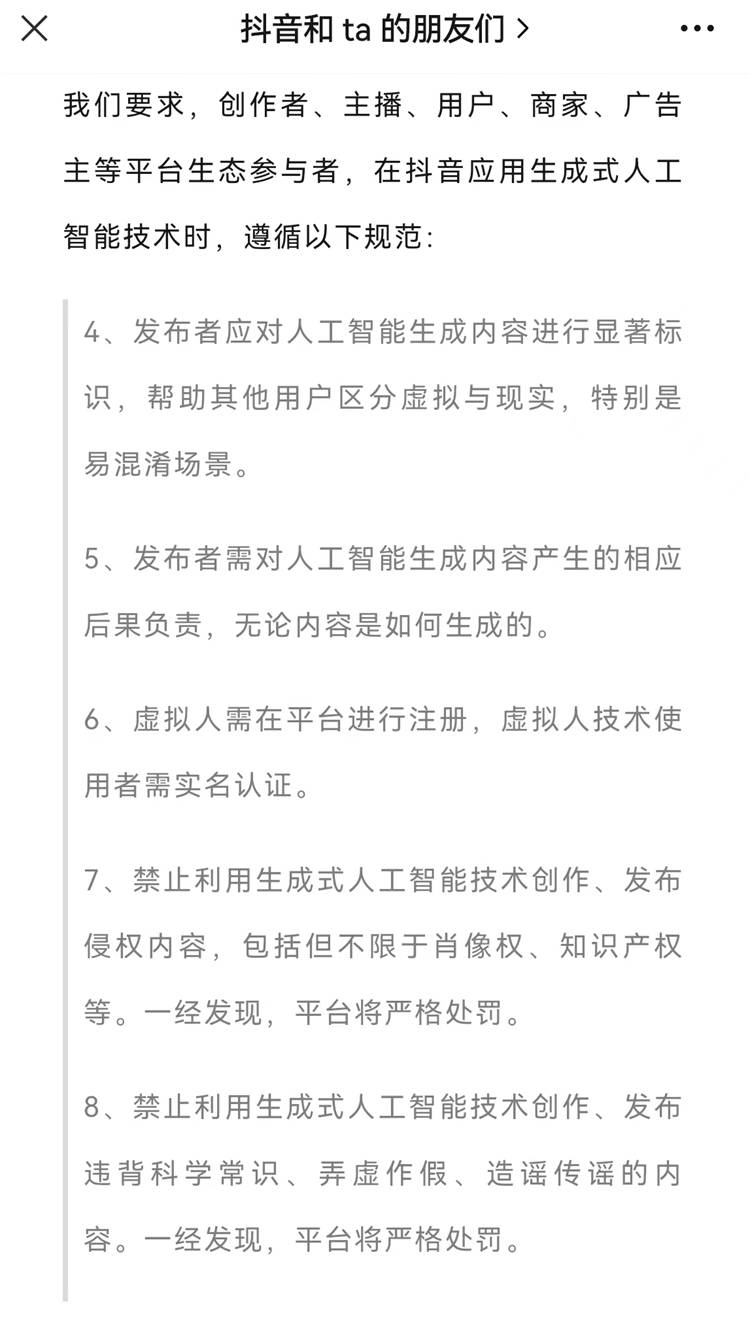The popular 'AI Stefanie Sun' has a series of legal issues behind it
Last week’s hit “AI Stefanie” song took the Chinese music scene by storm. Covers of songs such as “Hair is Like Snow”, “Rainy Day”, “Love in B.C.” and other songs have been played more than 1 million times, and the number of cover songs has exceeded 1 million. It is frequently recommended on the homepage of station B. As the song became popular, the issues behind it were also implicated, triggering extensive discussions among everyone.

How is "AI Stefanie Sun" implemented?
Let’s first talk about a question that everyone is curious about. How is “AI Stefanie Sun” implemented? In more official terms, "AI Stefanie" is an AIGC content product (artificial intelligence generated content) based on a "generative speech model".

Looking at this explanation, does it feel familiar to you? ChatGPT, which became popular some time ago, defines itself as "a large language model". It is also a model, but one is a speech model and the other is a language model.
Including AI intelligent drawing Midjourney, in fact, these are AIGC content products.
These AIGC content products all follow the same basic rule, which is to "feed" a large amount of data and then obtain corresponding content through AI training. When the more data is "fed", the results obtained will also be is more accurate.

AI Stefanie Sun is realized through the open source generative language training model. It trains collected audio materials such as Stefanie Sun songs, interviews, and live broadcasts, and uses AI technology to extract Stefanie Sun’s timbre characteristics, so as to cover other songs. From a technical point of view, the difficulty is not high, and netizens have shared relevant tutorials on the Internet.
“AI Stefanie Sun” faces the risk of infringement
The popularity of AI Stefanie Sun has aroused heated discussions among netizens on the Internet. After collecting and sorting out the opinions of relevant experts and lawyers on the Internet, it was found that AI Stefanie Sun may have two main legal issues. One is infringement of the rights and interests of the parties involved in the voice, and the voice and Portraits are personal attributes. Using AI technology to synthesize the voices of others may cause harm to the personal rights or property rights of the voice owner.
The second is copyright infringement. The song generated by using "AI Stefanie Sun" itself infringes the copyright of the song, which is illegal in itself. Some creators may also be aware of the infringement and delete the content of the songs they created. Some content creators will also mark the words "for learning and communication only, strictly prohibited for commercial use" to avoid risks.

Compared with AI sound production, the once popular "AI face-changing" brings greater legal risks. Only one or more photos are needed, and the characters in the photos can be transformed through the processing of deep synthesis algorithms. Becoming the protagonist of the video will infringe on the person's portrait rights. There are many legal disputes over portrait rights caused by "AI face-changing".
For example, JJ Lin once sued a Bilibili UP owner and Shanghai Kuanyu Digital Technology Co., Ltd. (the main company of Bilibili) for "AI face-changing videos." The infringing Bilibili video used AI technology to convert the video The character in the video was replaced with JJ Lin's face, infringing on JJ Lin's portrait rights.

The Hangzhou Court also heard a case in which the "AI Face Changing" APP used deep synthesis algorithms to infringe the portrait rights of others. In the case, the "AI Face Changing" APP claimed that one could become the protagonist of a video with just one photo. One of the videos The template uses an ancient-style video of the person who was violated. The "AI face-changing" APP company uploaded the ancient-style portrait video to the AI face-changing APP it operates without my consent for users to choose and use. It also violated the original video person. image rights.

AIGC relevant regulations are introduced to promote healthy development
Faced with the constantly emerging AIGC content and some problems that may arise. In April this year, the Cyberspace Administration of China issued the "Notice on Public Comments on the "Measures for the Administration of Generative Artificial Intelligence Services (Draft for Comments)". In order to promote the healthy development and standardized application of generative artificial intelligence, generative artificial intelligence Artificial intelligence refers to technology that generates content such as text, pictures, sounds, videos, and codes based on algorithms, models, and rules.

In May of this year, with reference to laws and regulations such as the "Internet Information Services Deep Synthesis Management Regulations", the short video creation platform Douyin also launched platform specifications and industry initiatives on artificial intelligence-generated content, requiring platform ecological participants to follow Relevant specifications. These include prominently marking content generated by artificial intelligence, requiring real-name authentication for virtual human users registered on the platform, and prohibiting the use of generative artificial intelligence technology to create and publish infringing content, including but not limited to portrait rights, intellectual property rights, etc.

In addition to our country, other foreign countries are also actively participating in AI legislation. Recently, the Internal Market Committee and the Civil Liberties Committee of the European Parliament passed the negotiation authorization draft of the Artificial Intelligence Act proposal. The National Institute of Standards and Technology in the United States also released the Artificial Intelligence Risk Management Framework in January this year. AI legislation is the general trend and It's urgent.
The birth of generative artificial intelligence technology itself is a good thing. It can be used to assist humans to complete more things with high efficiency. It has unlimited development possibilities. It is a new tool with epoch-making significance. The key is How can users make good use of this emerging tool? After all, oranges grow in Huainan, and oranges grow in Huaibei, and oranges grow in Huaibei. Legislation can guide the development of artificial intelligence in the right direction and avoid possible risks in its development, while not hindering the emergence of more new technologies.
The above is the detailed content of The popular 'AI Stefanie Sun' has a series of legal issues behind it. For more information, please follow other related articles on the PHP Chinese website!

Hot AI Tools

Undresser.AI Undress
AI-powered app for creating realistic nude photos

AI Clothes Remover
Online AI tool for removing clothes from photos.

Undress AI Tool
Undress images for free

Clothoff.io
AI clothes remover

Video Face Swap
Swap faces in any video effortlessly with our completely free AI face swap tool!

Hot Article

Hot Tools

Notepad++7.3.1
Easy-to-use and free code editor

SublimeText3 Chinese version
Chinese version, very easy to use

Zend Studio 13.0.1
Powerful PHP integrated development environment

Dreamweaver CS6
Visual web development tools

SublimeText3 Mac version
God-level code editing software (SublimeText3)

Hot Topics
 Top 10 latest releases of virtual currency trading platforms for bulk transactions
Apr 22, 2025 am 08:18 AM
Top 10 latest releases of virtual currency trading platforms for bulk transactions
Apr 22, 2025 am 08:18 AM
The following factors should be considered when choosing a bulk trading platform: 1. Liquidity: Priority is given to platforms with an average daily trading volume of more than US$5 billion. 2. Compliance: Check whether the platform holds licenses such as FinCEN in the United States, MiCA in the European Union. 3. Security: Cold wallet storage ratio and insurance mechanism are key indicators. 4. Service capability: Whether to provide exclusive account managers and customized transaction tools.
 Summary of the top ten Apple version download portals for digital currency exchange apps
Apr 22, 2025 am 09:27 AM
Summary of the top ten Apple version download portals for digital currency exchange apps
Apr 22, 2025 am 09:27 AM
Provides a variety of complex trading tools and market analysis. It covers more than 100 countries, has an average daily derivative trading volume of over US$30 billion, supports more than 300 trading pairs and 200 times leverage, has strong technical strength, a huge global user base, provides professional trading platforms, secure storage solutions and rich trading pairs.
 What are the top ten virtual currency trading apps? Recommended on the top ten digital currency exchange platforms
Apr 22, 2025 pm 01:12 PM
What are the top ten virtual currency trading apps? Recommended on the top ten digital currency exchange platforms
Apr 22, 2025 pm 01:12 PM
The top ten secure digital currency exchanges in 2025 are: 1. Binance, 2. OKX, 3. gate.io, 4. Coinbase, 5. Kraken, 6. Huobi, 7. Bitfinex, 8. KuCoin, 9. Bybit, 10. Bitstamp. These platforms adopt multi-level security measures, including separation of hot and cold wallets, multi-signature technology, and a 24/7 monitoring system to ensure the safety of user funds.
 What are the stablecoins? How to trade stablecoins?
Apr 22, 2025 am 10:12 AM
What are the stablecoins? How to trade stablecoins?
Apr 22, 2025 am 10:12 AM
Common stablecoins are: 1. Tether, issued by Tether, pegged to the US dollar, widely used but transparency has been questioned; 2. US dollar, issued by Circle and Coinbase, with high transparency and favored by institutions; 3. DAI, issued by MakerDAO, decentralized, and popular in the DeFi field; 4. Binance Dollar (BUSD), cooperated by Binance and Paxos, and performed excellent in transactions and payments; 5. TrustTo
 How many stablecoin exchanges are there now? How many types of stablecoins are there?
Apr 22, 2025 am 10:09 AM
How many stablecoin exchanges are there now? How many types of stablecoins are there?
Apr 22, 2025 am 10:09 AM
As of 2025, the number of stablecoin exchanges is about 1,000. 1. Stable coins supported by fiat currencies include USDT, USDC, etc. 2. Cryptocurrency-backed stablecoins such as DAI and sUSD. 3. Algorithm stablecoins such as TerraUSD. 4. There are also hybrid stablecoins.
 Which of the top ten transactions in the currency circle? The latest currency circle app recommendations
Apr 24, 2025 am 11:57 AM
Which of the top ten transactions in the currency circle? The latest currency circle app recommendations
Apr 24, 2025 am 11:57 AM
Choosing a reliable exchange is crucial. The top ten exchanges such as Binance, OKX, and Gate.io have their own characteristics. New apps such as CoinGecko and Crypto.com are also worth paying attention to.
 What are the next thousand-fold coins in 2025?
Apr 24, 2025 pm 01:45 PM
What are the next thousand-fold coins in 2025?
Apr 24, 2025 pm 01:45 PM
As of April 2025, seven cryptocurrency projects are considered to have significant growth potential: 1. Filecoin (FIL) achieves rapid development through distributed storage networks; 2. Aptos (APT) attracts DApp developers with high-performance Layer 1 public chains; 3. Polygon (MATIC) improves Ethereum network performance; 4. Chainlink (LINK) serves as a decentralized oracle network to meet smart contract needs; 5. Avalanche (AVAX) trades quickly and
 What is DLC currency? What is the prospect of DLC currency
Apr 24, 2025 pm 12:03 PM
What is DLC currency? What is the prospect of DLC currency
Apr 24, 2025 pm 12:03 PM
DLC coins are blockchain-based cryptocurrencies that aim to provide an efficient and secure trading platform, support smart contracts and cross-chain technologies, and are suitable for the financial and payment fields.






